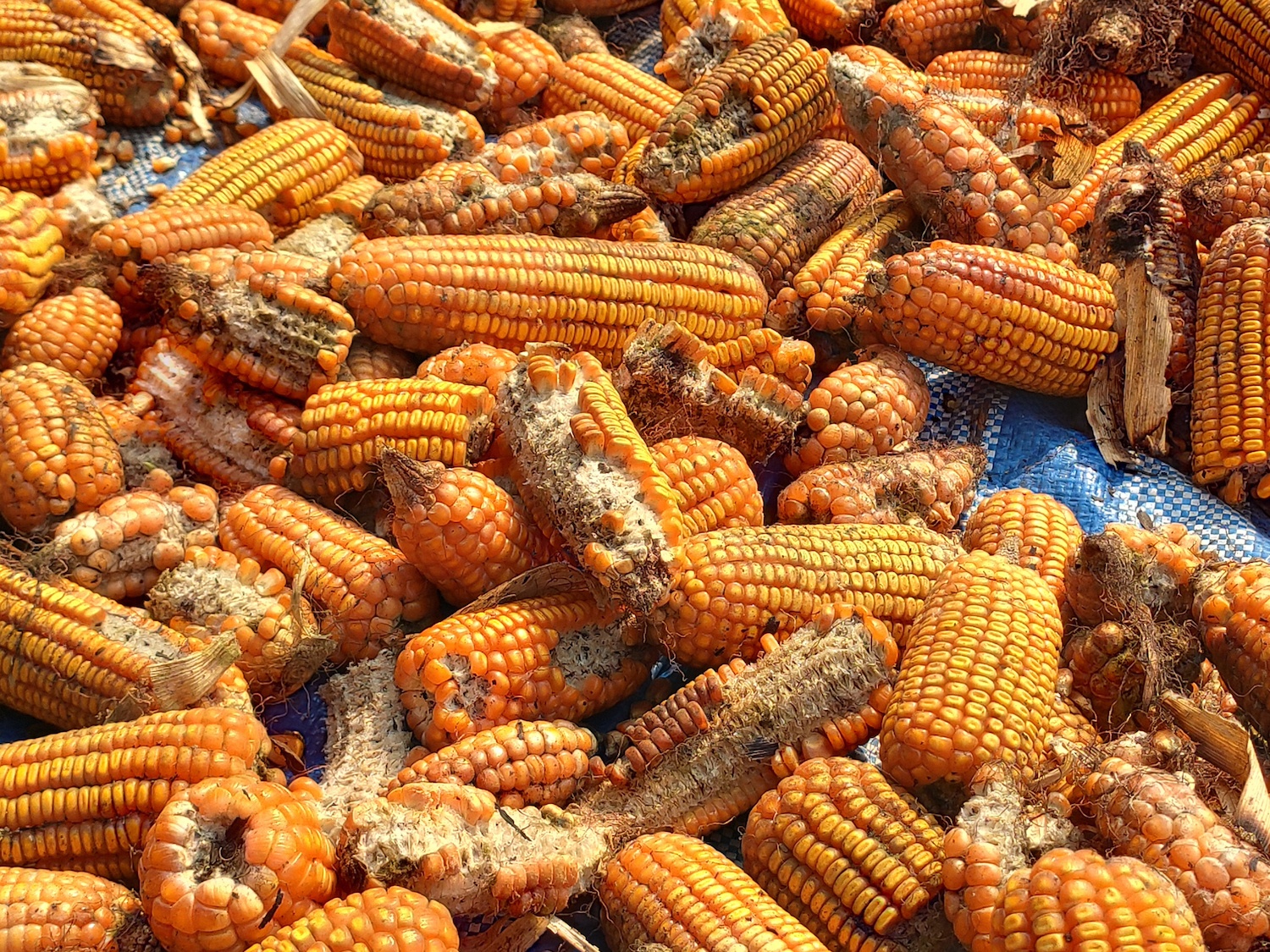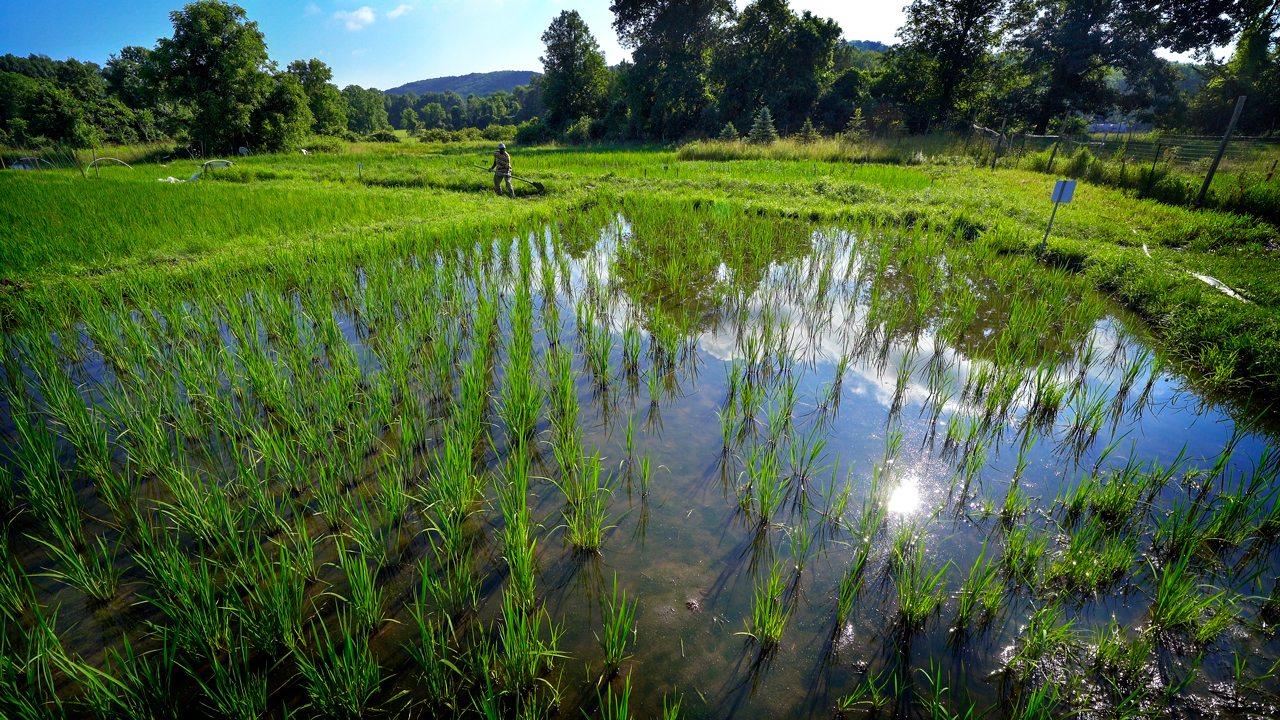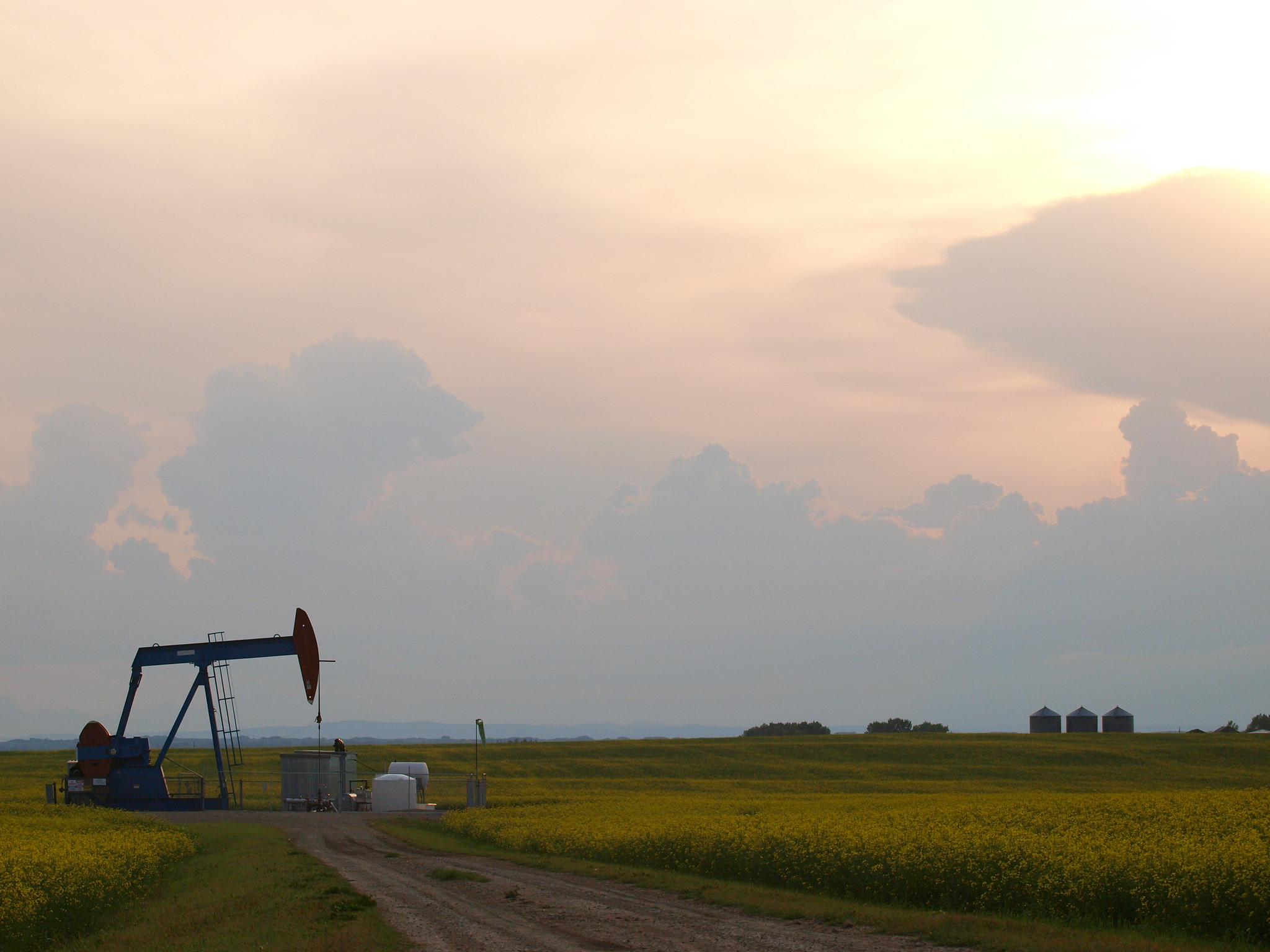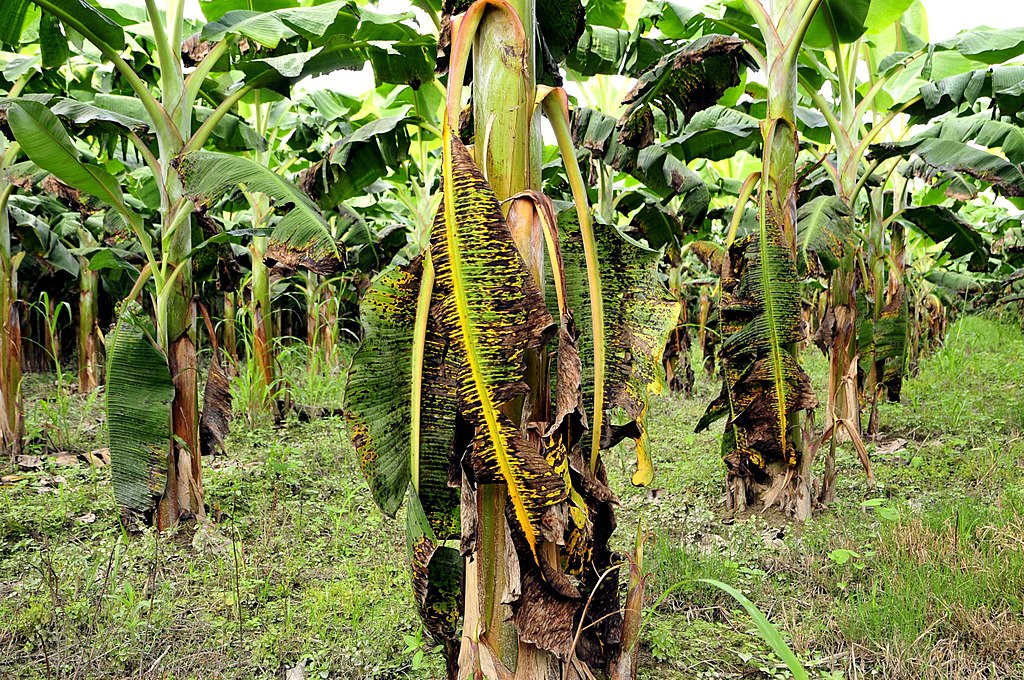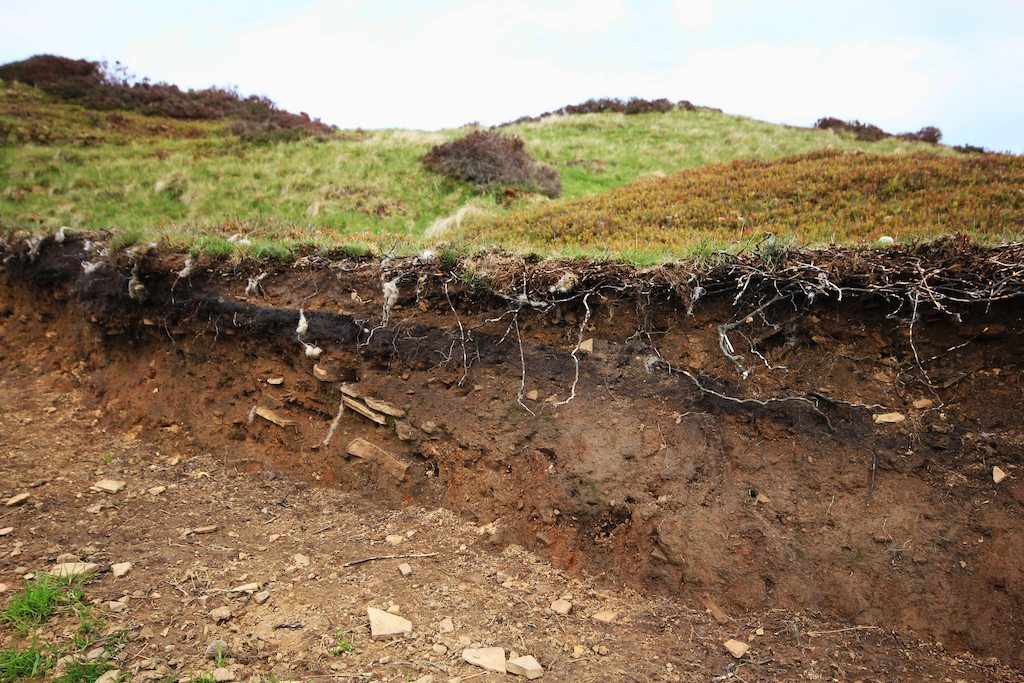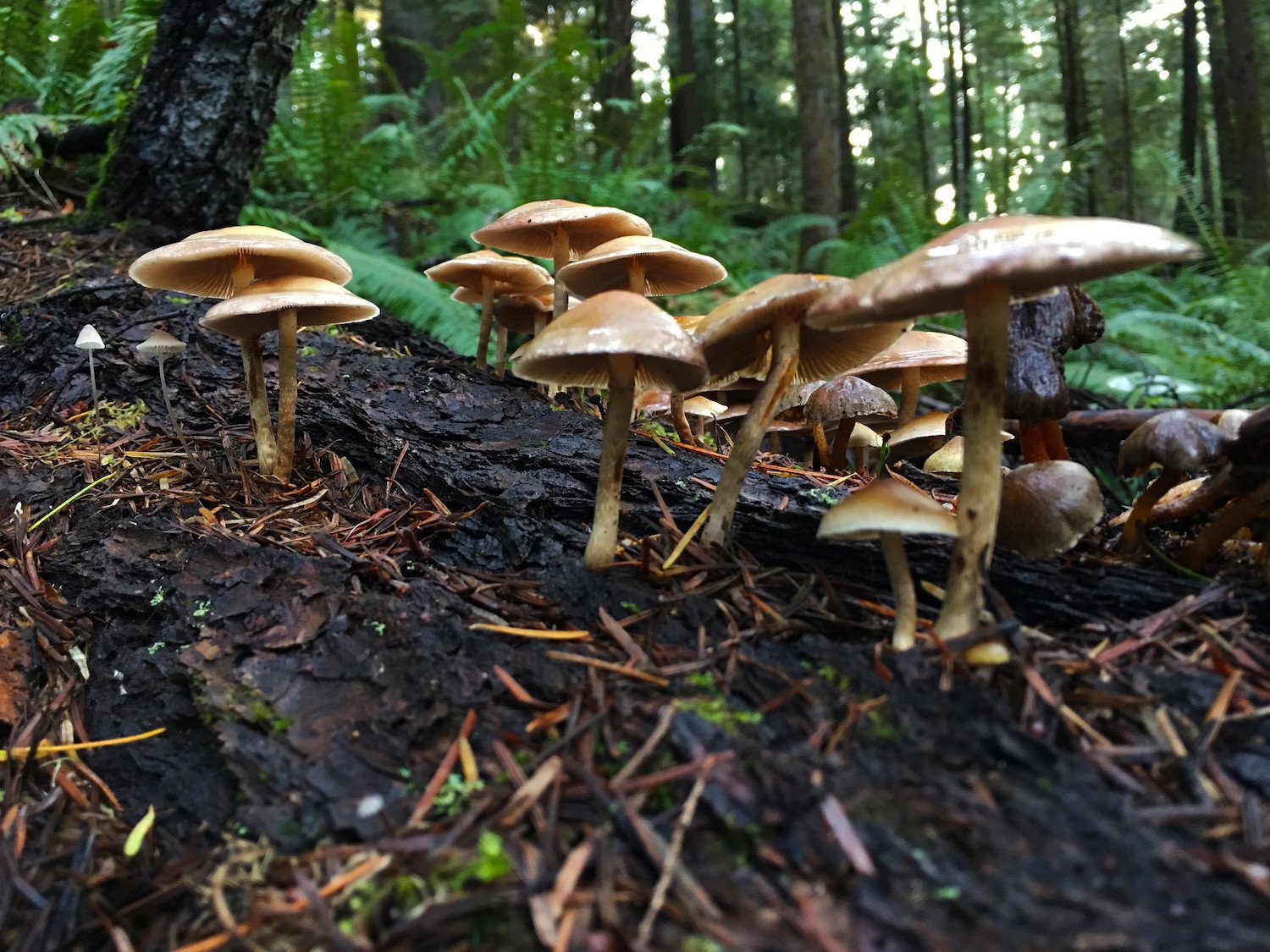Fungal toxins known as mycotoxins, including some thought lost to history, are claiming new territory as the Earth warms.
Karen Jordan, a North Carolina dairy farmer and practicing veterinarian, knew she had trouble the minute her cows’ hair began to stand up on end.
When a cow is healthy, she explains, their hair lays tight and sleek against their skin. But one by one, her cows began to poof up like agitated cats. A few days later, she found out why—the corn she had fed her cattle contained an invisible, harmful compound called T2.
Then she “got unlucky” a second season when she picked up another bad batch of feed, this time a load of cotton seed. That year, she figures, the rash of hurricanes had dumped so much water on southeastern farms that mold, and associated toxic compounds called mycotoxins, had spoiled whole swaths of cropland.
“This year we were wet early, and then it kind of straightened out. But in the Midwest, it was wet late. That was the perfect stew for a mycotoxin year.”
People involved in food production have been aware, on some level, of the presence and harms of mycotoxins for at least 2,000 years. These toxins, we now know, are harmful chemicals produced predominantly by the fungi that grow in grains. Historically, mycotoxins have triggered outbreaks of gangrene, convulsions, heart failure, paralysis, mental illness, and may have even played a role in the Salem witch trials. Today, they are largely considered a problem for animal producers, whose animals can fall ill and even die if fed contaminated grain or silage.
But the toxins are rapidly spreading, hastened by climate change and reduced global crop diversity.
This January, John Winchell loaded up his truck to pay a visit to farms throughout the northeastern U.S., where he consults with farmers about the detection and prevention of mycotoxins on behalf of Alltech, a global animal and food production supplier. The last three years, he says, mycotoxins have been particularly prevalent in the U.S. But he takes comfort in the fact that the uptick is not exactly mysterious—it’s all due to the weather.
[Subscribe to our 2x-weekly newsletter and never miss a story.]
“We’ve had two years of consistently wet weather,” he says. “This year we were wet early, and then it kind of straightened out. But in the Midwest, it was wet late. That was the perfect stew for a mycotoxin year.”
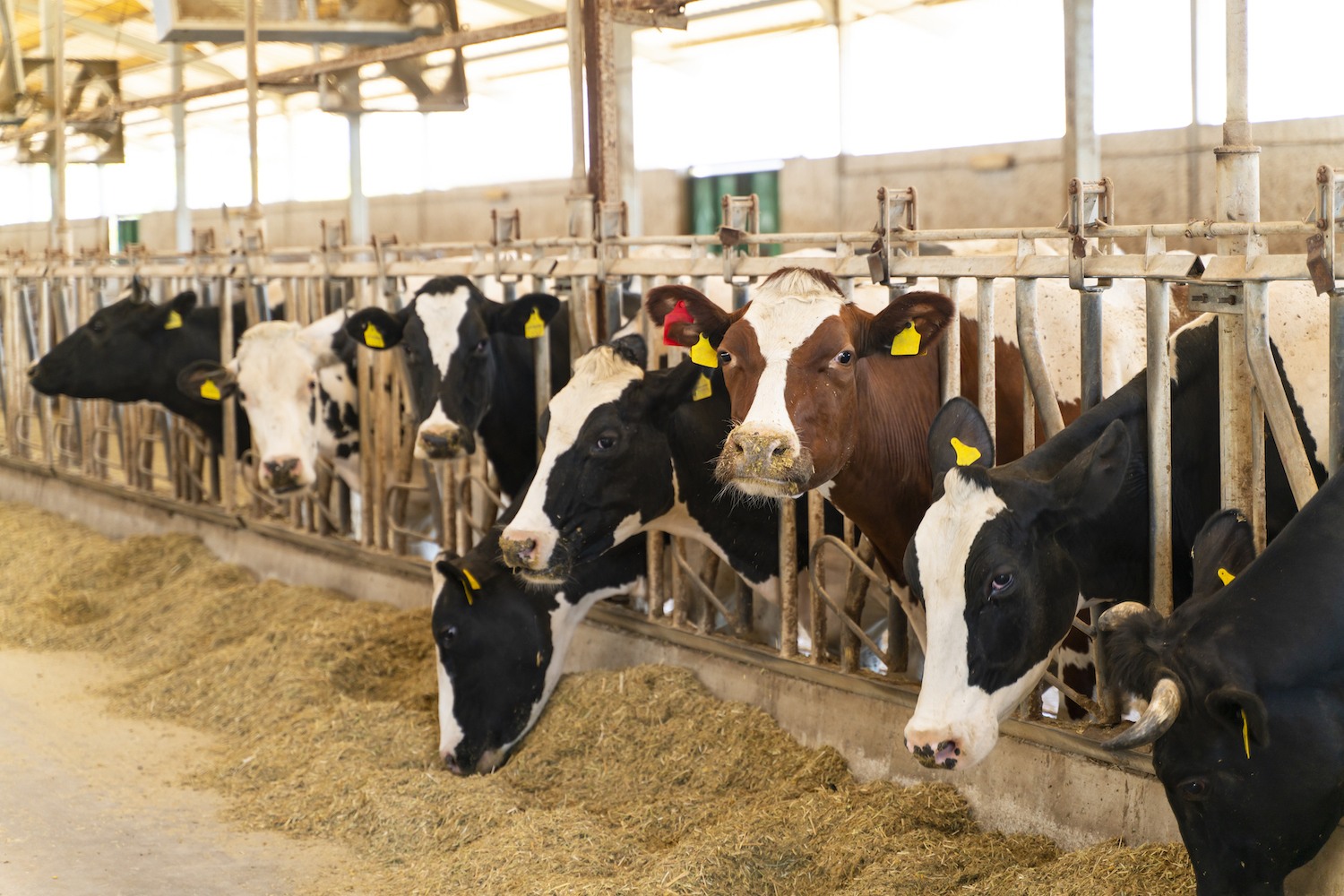
Once a farmer realizes they have a problem, they must identify the source. For larger dairies, this process can take so long that by the time you get your tests back, the guilty load of feed is probably already consumed.
While the last two to three years stand out for having produced exceptionally high levels of mycotoxin contamination—particularly in chopped up, fermented corn stalks and leaves that are fed primarily to cattle—this isn’t a recent trend. National data collected by Alltech, Winchell says, shows a steep increase in many of the toxins common to the U.S. since monitoring began in 2012.
Some of this increase can be attributed to advances in scientists’ ability to detect mycotoxins, as well as a growing library of just how many varieties actually exist. But experts around the world agree that climate change is also playing a significant role. Not only does climate change promote the weather conditions that trigger mycotoxin production, but shifting weather patterns are causing various toxins to appear in new regions of the world—places where food producers can be caught unawares, unable to respond in time to prevent widespread contamination.
For developed countries like the U.S., mandatory tests rolled out in recent decades are designed to catch these outbreaks before they impact consumers. But in developing countries, or among low-income populations that may be more inclined to consume homemade or craft food products, mycotoxins remain a growing concern.
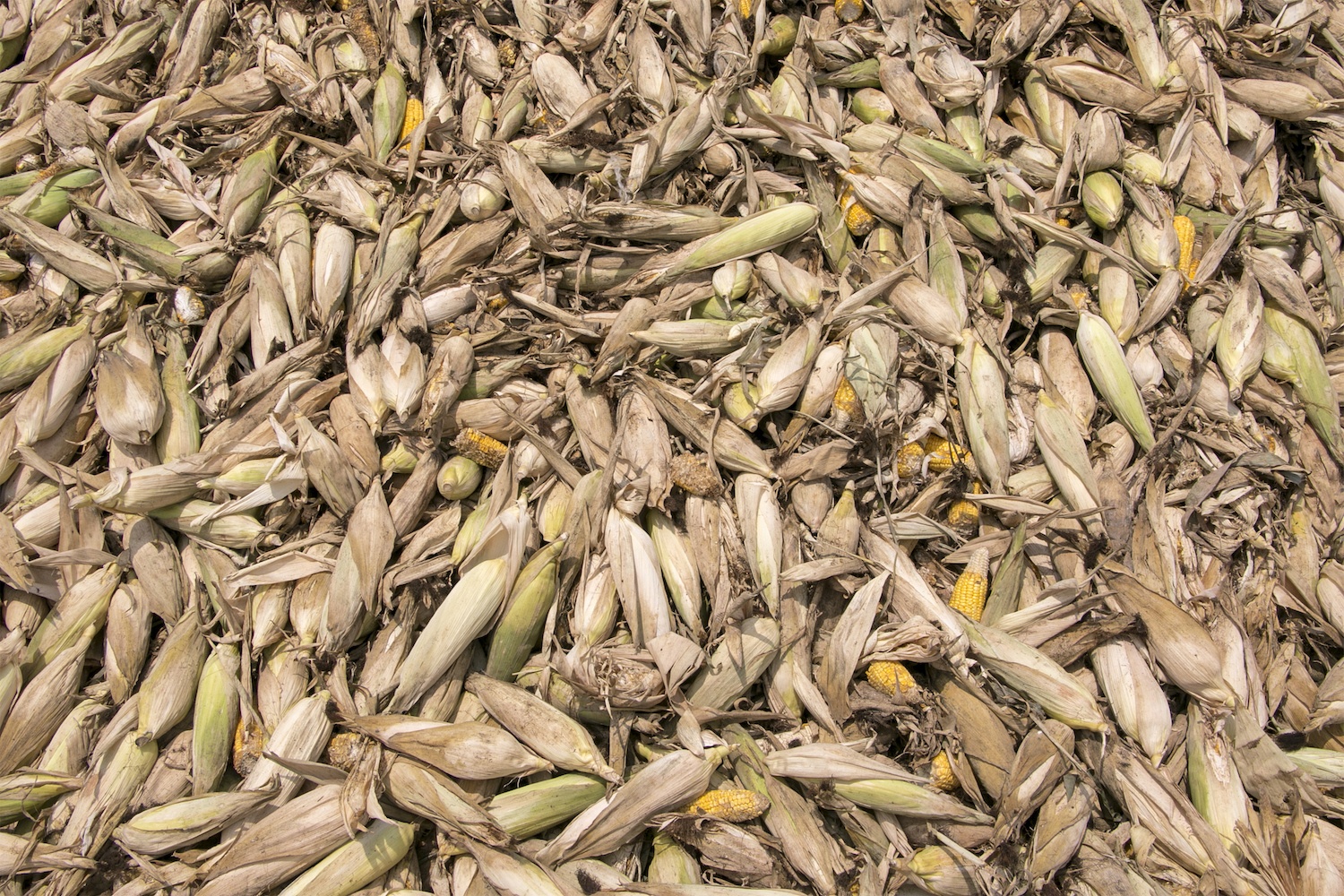
Mold itself doesn’t indicate the presence of mycotoxins. That requires the addition of other factors, like high heat. Sudden cold might do the same. Or, if a field dries out too quickly after the mold takes root, that too can prompt the release of mycotoxins.
iStock / vittavat-a—
Moldy food may look scary, but it’s not actually the mold itself that’s toxic, Winchell says, likening mold to a skunk.
“Because if you walk out of your house tonight, and you see a skunk, he’s not necessarily going to spray you,” he says. “But if you stress him out, he’s going to spray you.”
Similarly, when molds are under stress, that’s typically when they produce mycotoxins.
This is where climate comes into the picture, Winchell says. If mold spores are present in the environment, they typically need the right conditions to grow—the right temperature, the right amount of moisture. Warm, wet conditions trigger the growth of most fungi, though each species has its own range of preferences.
“If you draw a line from Minnesota to the Canadian border into Quebec, going to the ocean—I call that mycotoxin alley.”
But mold itself doesn’t indicate the presence of mycotoxins. That requires the addition of other factors, like high heat. Sudden cold might do the same. Or, if a field dries out too quickly after the mold takes root, that too can prompt the release of mycotoxins.
Some regions are more prone to mycotoxins than others. In the U.S., some of the largest agricultural producing states are also the most prone to contamination.
“If you draw a line from Minnesota to the Canadian border into Quebec, going to the ocean—I call that mycotoxin alley,” Winchell says. The weather in “mycotoxin alley” promotes the growth of fusarium fungi that produce the most prevalent kinds of mycotoxins in the U.S.
Northern mycotoxins may cause reproductive problems in cattle—abortions and stillbirths, decreased milk production.
When fed to livestock, fusarium-type mycotoxins, common in temperate, northern climates, can cause a host of problems, according to Winchell. Many mycotoxins suppress the immune system, which leaves animals more prone to infection. In swine, the toxins may induce vomiting and weight loss. Other common northern mycotoxins may cause reproductive problems in cattle—abortions and stillbirths, decreased milk production. Digestive issues resulting in weight loss are common.
Because these potential issues all result in a loss of income for the farmer, most animal producers have developed a keen interest in mycotoxins, particularly in recent years as weather has triggered outbreaks.
—
The human diseases triggered by mycotoxin exposure have, for many years, been treated in a historical context. A disease called ergotism, caused by the fungus Claviceps purpurea, killed thousands of Europeans in the Middle Ages. Another fungi, Penicillium citreonigrum, caused nutritional deficiencies that could lead to heart failure in 17th century Japan. The toxin responsible, associated with the consumption of moldy rice, was thought to be essentially extinct until it re-emerged in Brazil a few years ago, according to the authors of a 2017 paper published in the Journal of Agricultural and Food Chemistry.
“During a period of climate change and greatly reduced crop diversity on a global basis, researchers tasked with monitoring the food system need to be aware of fungal toxins that might have been rare in their working careers that can reappear,” the authors wrote.
But perhaps the most concerning mycotoxin, with respect to climate change and modern food systems, is aflatoxin, a potent carcinogen capable of triggering liver cancer in humans. Unlike the fusarium toxins common in northern climates, aflatoxin is triggered by hot weather, which means that it’s most common in equatorial regions. Or, it was.
“Researchers tasked with monitoring the food system need to be aware of fungal toxins that might have been rare in their working careers that can reappear.”
Over the last 15 or so years, aflatoxin has begun to infiltrate Europe. In 2003, Italy experienced an unusually hot summer with very little rainfall. That year, the country’s corn crop blossomed with aflatoxin.
To researchers, the presence of the toxin was not entirely surprising—climate models had predicted that aflatoxin would eventually make its way to Europe, according to Paola Battilani, who studies fungi at Italy’s Catholic University of the Sacred Heart. The hard part, she says, was getting local farmers to take action.
“What we tried to do was alert the farmers, but it was not easy,” she says. “When a problem is not known, the farmer does not listen to you.”
Farmers continued to ignore warnings from academics, Battilani says, up until the toxin was detected in milk, “which is obviously too late.”

By the time Italian officials realized the toxin had made its way into the nation’s milk supply, the milk had already been processed and made into cheese and other products.
Unlike most other mycotoxins, which only sicken the animal that directly consumes the toxin, aflatoxin can contaminate animal products we eventually consume like dairy and sometimes meat. By the time Italian officials realized the carcinogenic toxin had made its way into the nation’s milk supply, Battilani says, the milk had already been processed and made into cheese and other products, particularly in the region that produces the country’s signature parmigiano-reggiano. There was only one option to prevent human exposure at this point: All the affected milk and cheese had to be destroyed.
It’s still not known how much cheese and milk had to be thrown away, Battilani says, but the losses weren’t limited to the dairy industry. After the outbreak, producers became wary of Italian-grown corn, and the nation consequently lost nearly 40 percent of its corn acreage.
“Farmers selected other crops instead of maize, and this is a big problem for Italy,” Battilani says. “Because now we have to import a lot of maize.”
Back in the U.S., dairy farmer Jordan can understand this reaction. “Once you get burnt—it took me years before I would feed corn gluten,” she says. “But I’m still not back to whole cottonseed.”
—
Although aflatoxin has turned up in southern states such as Texas, Louisiana, and Georgia, Winchell doesn’t believe that what happened in Italy could happen here. That’s because the FDA requires food processors to test all milk for aflatoxin before it can be sold to consumers or other users. If a batch of milk tests positive, the milk is destroyed.
But aflatoxin is one of just a few mycotoxins for which monitoring is mandatory. At least 37 mycotoxins are known to cause illness in livestock, and for many—including the mycotoxin that hit Jordan’s farm—testing is optional.
The mycotoxin Jordan encountered won’t contaminate human food in the same manner as aflatoxin, but it can have a dramatic financial impact on the farmers who encounter it. For about six months after they began to show illness, Jordan says, her cows’ production fell by 10 to 12 pounds per animal per day. Margins in dairy are already razor thin, she says, so with those kinds of losses, “you’re probably barely paying your feed costs.”
“When you buy a load and it’s bad, you’re just stuck.”
This wasn’t a short, quick hit, either, Jordan says. Once farmers realize they have a problem, the first order of business is identifying the source. For larger dairies, this process can take so long that by the time you get your tests back, the guilty load of feed is probably already consumed. But on a smaller farm like her own, you’re left to puzzle over what to do with the contaminated food.
“With us, we’re so little that I’m going to be in that misery of feeding a bad product for six to eight weeks,” Jordan says. “I just couldn’t do that to my cows.”
With aflatoxin, Jordan says, farmers may have regulatory recourse and can sue the mill or farm that sold them the bad feed. But with other, unregulated toxins, she says, “when you buy a load and it’s bad, you’re just stuck.”
So the second time T2 showed up in her feed, Jordan says, she called her supplier, and demanded that he take the cottonseed back and refund her.
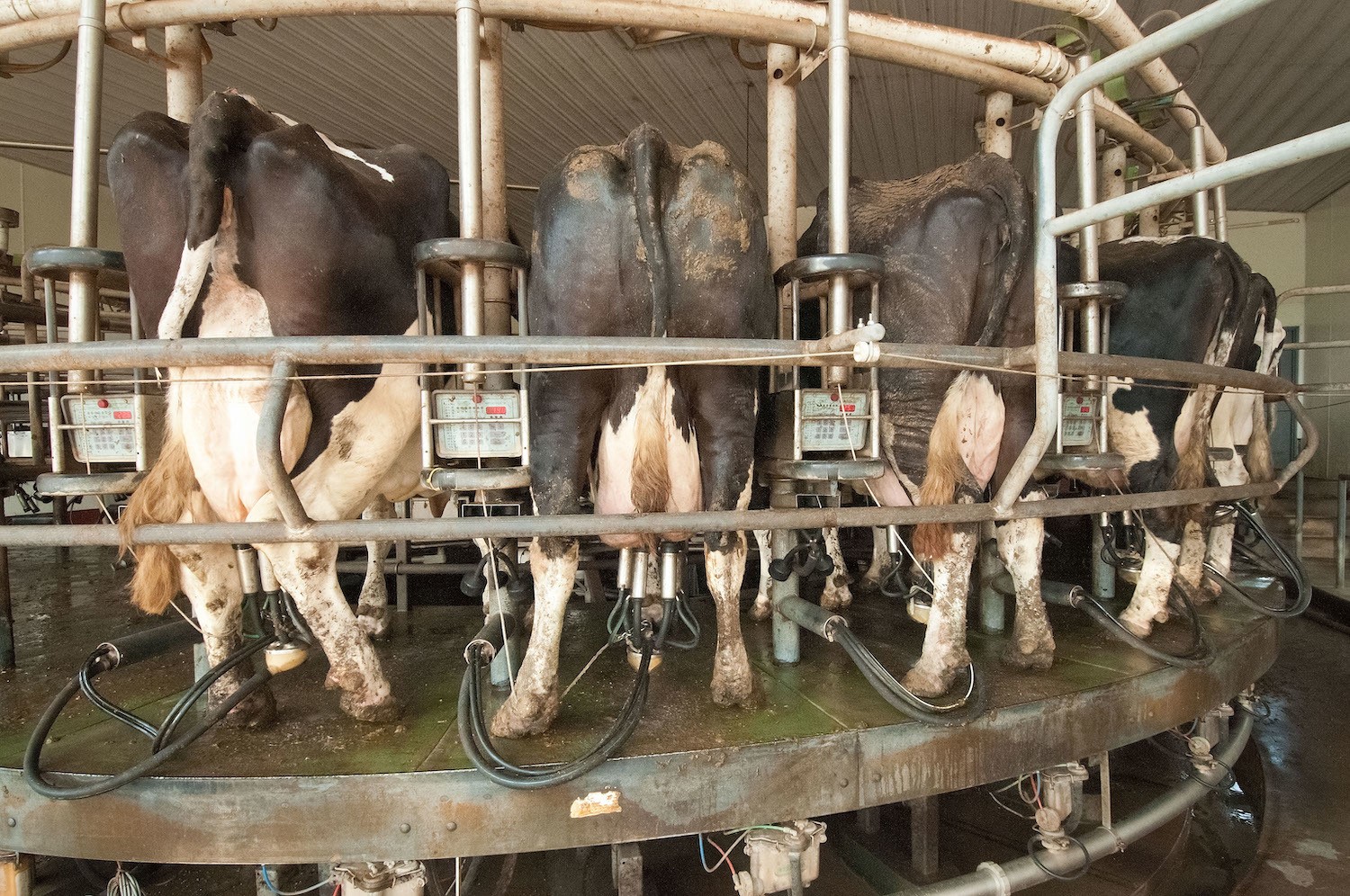
Milk containing aflatoxin cannot be sold; once aflatoxin is detected in a farmer’s milk, it is incumbent upon the farm to prove their farm is free of contamination before they resume selling.
USDA photo by Bob Nichols“His response to me was, if we come get that, we will never do business with you again,” she says. “And I was like, OK, because if we keep feeding this, we won’t be here anyway.”
Costs can pile up quickly when a farmer’s feed is contaminated. There’s the cost of the testing to identify the problem, which can cost $80 per sample. And, on the off chance the toxin to blame is aflatoxin, farmers must also test the milk their cattle produce. Milk containing aflatoxin cannot be sold; once aflatoxin is detected in a farmer’s milk, it is incumbent upon the farm to prove their farm is free of contamination before they resume selling. The farmer is also often required to figure out how to safely dispose of the contaminated milk, which may entail paying a waste management company. Between this and the lost productivity, Jordan says, a single mycotoxin incident can cause farmers to experience losses for a good six months.
On top of this, farmers in many cases have no choice but to throw away all the contaminated grain, says Jamie Jonker, vice president of sustainability and scientific affairs for the National Milk Producers Federation. But if the farmer does that, he says, “you still have to feed the animals. They have to purchase feed to replace that….essentially, they’re paying for feed twice now.”
Jonker describes these financial losses as “incremental.” But after five years of exceptionally low milk prices, any additional cost “just compounds the economic stress they’re under and really makes it more difficult for them.” Between the tough dairy economy, the trade war, the weather and the mycotoxins last year, Jonker says, nearly nine percent of U.S. dairy farms went out of business last year.
—
While mycotoxins occur globally, the issue is particularly troubling outside the U.S, in countries with limited capacities for effective regulatory oversight accompanied by weak infrastructures, according to Vittorio Fattori, a food safety and quality officer with the Food and Agriculture Organization of the United Nations.
“Aflatoxins can affect staple foods such as cereal grains and peanuts,” Fattori says, “with important consequences for food safety and food security of poor and vulnerable populations in many parts of the world, especially Africa where dietary exposure to aflatoxin remains unacceptably high.”
At least one study connected the toxin to the death or illness of more than 300 Kenyans in 2004.
“In countries where value chains are less organized, mycotoxins can be a completely different issue than in countries where agriculture is a well-managed business chain,” says Catherine Bessy, an FAO food safety officer who has worked in African nations including Kenya to promote monitoring and preventing mycotoxins, supported by good agriculture and storage practices that can help limit mycotoxin contamination.
While large firms test rigorously for mycotoxins, homemade or cottage products are not always screened.
Prevention and good understanding of sampling and testing plans is critical in food-insecure countries, Bessy says, where it can be socially difficult to throw out contaminated food supplies. International trade, and disparities between various nations’ limits on maximum mycotoxin content, can further exacerbate the situation in developing countries. Grain that meets the higher standard is often sold for exports, while contaminated grain is retained and consumed by the locals.
“In that sense, it is important for standards to be harmonized across countries,” Bessy says.
Standards, however, only go so far, as some populations may fly under the radar, according to Raj Murugesan, a technical director for international mycotoxin testing firm Biomin. While large firms test rigorously for mycotoxins, homemade or cottage products are not always screened. This dynamic may have contributed to a cluster of birth defects that occurred among Mexican Americans on the Texas-Mexico border in the early ’90s, thought to be linked to high levels of fumonisins, another common mycotoxin in the U.S., in corn tortillas consumed by the local populace. Livestock in the region were taken off feed containing corn that year, but some of the corn continued to make its way into the human food chain.
In one treatment option, farmers can spray their fields with harmless fungi that out-compete the mycotoxin-producing species.
Despite his concerns, Winchell remains optimistic. American farmers and corporations grow more aware of mycotoxins each day, and the means of combating them are growing. While Winchell said most farmers continue to opt for destroying contaminated products, researchers continue to develop means of preventing and treating mycotoxins. Adding clay to animal feed, for example, can render some toxins inert. Progress is also being made on biological means of controlling the toxins—in one treatment option, farmers can spray their fields with harmless fungi that out-compete the mycotoxin-producing species, preventing the contamination from occurring in the first place. Battilani said she hopes the latter will be approved for use in Italy this year.
“We also know a lot more about how to test for mycotoxins,” Winchell says. “We have a lot more specific testing we can do, and we know much more about it. Years ago, we didn’t have that information. But with the technology we have now, and the management tools that we have on the farm, we’re actually getting ahead of this. I look forward to seeing how it will be in the next five years.”
As a farmer, Jordan has her wish list ready: Binders and treatments are expensive, so she’s hoping for mycotoxin-resistant seed varieties. On the regulatory front, she says, more mandated testing would likely help farmers.
But while farmers are in “better shape every year,” Winchell says, there remains some frustration about the current state of affairs, with widespread flooding prompting warnings from officials across the U.S. and Canada.
“As we’re getting these deeper weather patterns,” he says, “a lot of these things are somewhat out of our control.”
